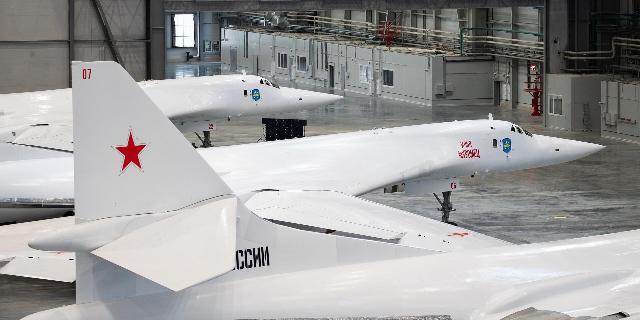TNI: Tu-160M2 will become a new word in the strategy of the Russian armed forces
The Tu-160M2 bomber will provide the Russian armed forces with a key advantage over the American ones, writes TNI. To counter this aircraft, the United States will have to upgrade its Air Force, and they are not going to do this yet.
Brandon J. Weichert
The modernization is aimed at introducing the latest electronic warfare systems and new generation radio equipment. The Tu-160, which has been in service since 1987, is the fastest, heaviest and largest nuclear bomber in the world. The Tu-160M2 will expand its capabilities with hypersonic missiles, including the X-101 and its nuclear version, the X-102. As of 2023, four upgraded bombers have been delivered, and up to 50 units are planned to be built in total. The extended offensive capabilities of the Tu-160M2 pose a serious challenge to Western defense strategies, especially given the potential for simultaneous deployment of several hypersonic weapons — this makes it a backbone tool for the Russian armed forces.
Russian Tu-160M2 Blackjack bomber: a headache for NATO or a paper tiger?
The Russian Tu-160M Blackjack or White Swan nuclear bomber is one of the most formidable sights in the world.
A giant white supersonic aircraft with a variable sweep wing, even with the usual red stars, looks more like the imperial Lambda-class shuttle from the original Star Wars trilogy than the usual Russian bomber.
The fastest, heaviest and largest nuclear bomber in the world is about to undergo a major upgrade. This is not only a sure sign that the Russian defense industry is not slowing down, despite the sensational economic sanctions of the West, but also that the Russian regime is convinced that a world nuclear war is really approaching.
Key features of the Tu-160M2
The Tu-160M is equipped with powerful Kuznetsov NK-32 engines and develops a speed of Mach 2. However, it is becoming increasingly difficult to keep this bird, at least because of its age. Therefore, the Russian authorities have embarked on a large-scale modernization to the level of the Tu-160M2.
The Tupolev Design Bureau's White Swan bomber went on duty in 1987, when a red flag with a hammer and sickle was still flying over Russia. It was one of the last weapons systems received by the Soviet Air Force before the country went to the dustbin of history.
The new version of the Blackjack bomber is presented as a completely updated aircraft. In particular, the bird will receive modern electronic warfare systems, as well as new generation radio equipment. The newest version of the Tu-160 began flight tests in December 2021. It is believed that Russia will be able to build over 50 bombers of the updated model.
As of 2023, four have been delivered to the Russian Aerospace Forces.
The new Russian upgraded Tu-160M2 have a powerful offensive potential and pose a serious threat to the West. The new “White Swans" will be able to launch hypersonic missiles. Otherwise, the Tu-160M2 has a lot in common with the old version. Like its prototype, the new variant will be able to carry six different types of weapons, including the X-101 missile and its nuclear version X-102.
The Tu-160M2 is not only a hypersonic weapon delivery system, but also a giant “truck" with missiles. In particular, the bombers can carry a smaller version of the X-101 — X-50. In addition, the aircraft will receive extensive missile countermeasures and an incredible ability to breach air defense areas. If the Russians fulfill the entire order in full and deploy all 50 Tu-160M2 at once, these birds will be able to release 32 hypersonic vehicles without blinking an eye at a given target.
How will America respond?
If the Tu-160M2 meets expectations, it will become a new word in the strategy of the Russian armed forces. The United States has systems that can compete with it — for example, the B-21 Raider from Northrop Grumman.
However, in order to counter this threat seriously, the US military will have to completely upgrade its Air Force, but nothing foreshadows this in the near future. Thus, the Russians, provided that they produce bombers in sufficient quantities, will gain a key advantage over Western competitors — at least until the end of modernization.
Brandon Weichert is a national security analyst at The National Interest, a former Congressional staffer, and has published in The Washington Times, Asia Times, and The Pipeline

